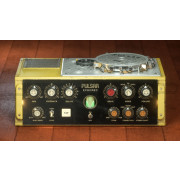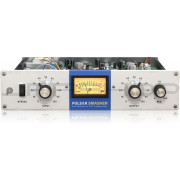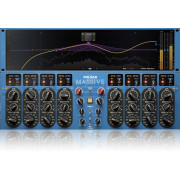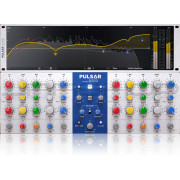You're currently on:
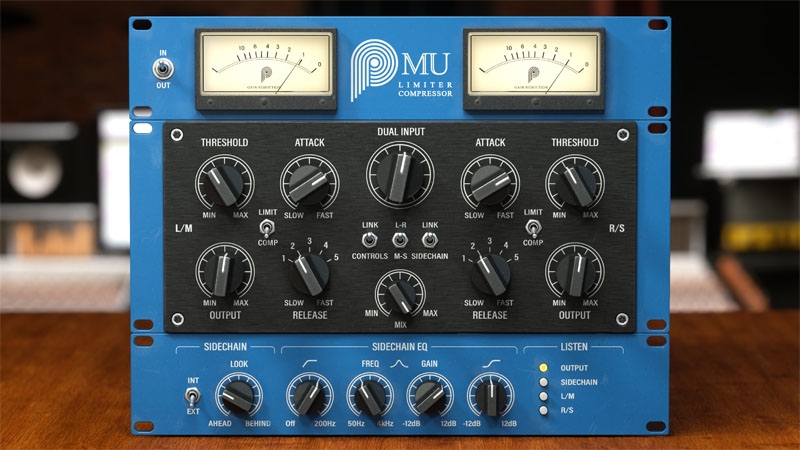
Pulsar Audio Mu




The most faithful emulation of a modern yet legendary tube compressor/limiter – perfect glue for mixing and mastering
An industry-standard tube compressor
There are several reasons to use a variable-bias tube compressor. One is the exceptional compression transparency that this kind of compressor can achieve, even when pushed into extreme gain reduction. Another – and perhaps the most common – is their ability to add cohesion or “glue” to buses, whole mixes and masters.
Unfortunately, the original hardware is expensive and difficult to integrate with “in-the-box” workflows. Software emulations exist but most owners of the hardware agree that they cannot be compared to the original unit, as there’s always “something” missing.
With its unique Topology Preservation Technology, Pulsar Mu sounds objectively identical to the hardware in every production context, and even makes improvements such as an increased signal-to-noise ratio.
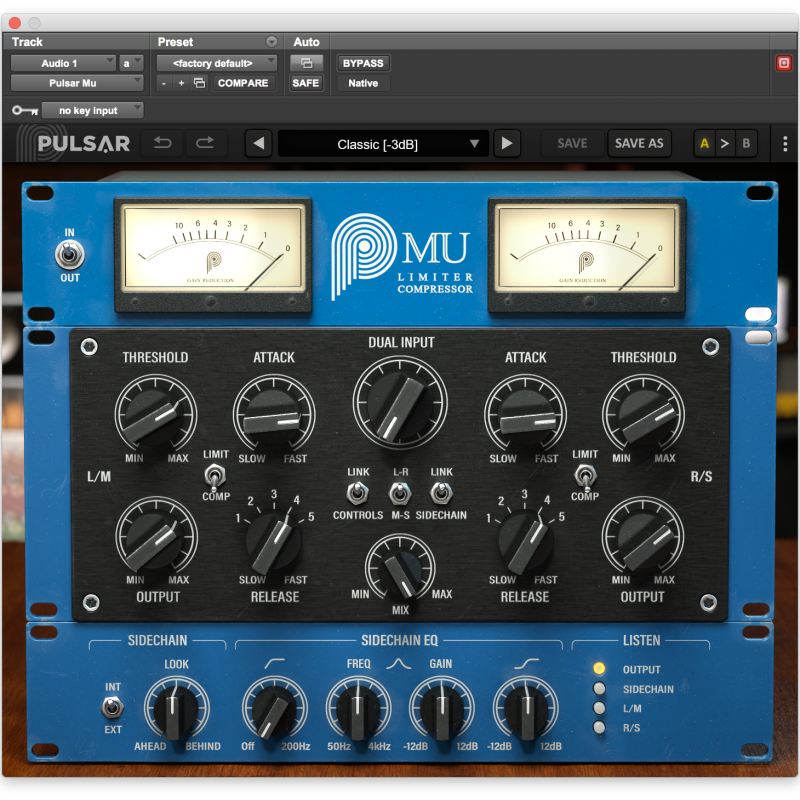
Improving on a classic
Pulsar Mu is a stereo compressor operating in either Left/Right or Mid/Side modes, designed with mixing and mastering applications in mind, but also flexible enough for tracking. It can be used for levelling, limiting, or just to add a bit of analog warmth with its emulated tube signal path.
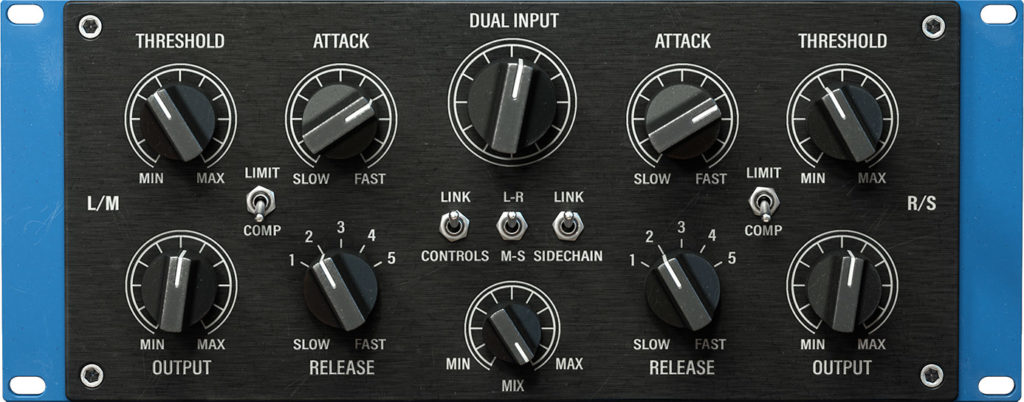
While reproducing the accurate SIFAM metering of the original unit, Pulsar Mu also provides a more modern visualization mode for fine-tuning compression settings, representing the waveform and gain reduction both over time and instantaneously.
Pulsar Mu also offers various options that apply to the sidechain signal. A popular mod of the original device was to add a high-pass filter, but Mu goes even further, offering a more complete equalization section, enabling to precisely adjust the compressor’s response to bass, midrange and treble using only four knobs.
Another addition is the possibility of advancing (look-ahead) or delaying (look-behind) the sidechain signal. This enables you to take ultimate control over transients, letting the compressor start to react before they happen, over even after they happen, opening up all kinds of creative uses.



How does it sound ?
Transparent but musical
The sound of Pulsar Mu is impressively transparent with a touch of warmth. It manages transients in a soft and musical way, even with extreme settings, unlike a FET or VCA compressor. With Mu, you can add movement while respecting the natural dynamics of a source.
Mastering
The most classic use of Mu is in mastering: it brings the discreet "polish" and "glue" to subtly warm up any mix. It can be used either transparently as a leveller (with long attack and release), as a compressor to add glue (slow attack with fast release), or as a limiter (fast attack and fast release). Using Mu in Mid/Side mode gives you another way to increase stereo image, or to curtail an overly wide mix.
Drum buss
Pulsar Mu can quickly create the “glue” needed for cohesive drum buss processing, while still respecting transients – even those of a kick drum. Depending on the chosen gain reduction and release time, it can restore the room ambience essential for certain styles of music – especially when used as a parallel compressor.
Acoustic guitar
On an acoustic guitar, with a relatively low gain reduction setting, Pulsar Mu creates a nice organic groove, while respecting the transients of the instrument. This subtlety is useful for livening up a dull, stiff guitar track, giving it edge and personality.
Snare drum
Pulsar Mu can give body and consistency to thin snare drums sounds, even while preserving their transients, which are essential for helping them break through the mix. When pushed a little harder, Mu can help you recover sustain, harmonics, or even ambience.
Vocals
Pulsar Mu sounds particularly good on vocals – especially with fairly high input and medium attack and release. It gives them the analog-style warmth to help them sit naturally, even in a dense mix.
Main Features

Topology Preservation Technology
Our modelling technology guarantees a perfect emulation of the original device’s behavior. From the saturation of the magnetic flux in the transformers, to the precise response of the tubes, to the effects of tiny calibration defects, everything is perfectly reproduced.
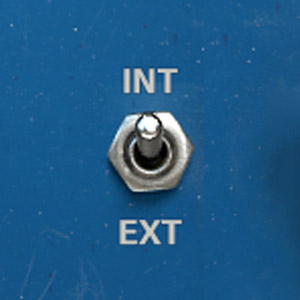
External sidechain
Pulsar Mu allows to define an external sidechain input, as all compressors should in the digital age. This opens a very wide range of applications: ducking, de-essing, filtering the sidechain signal with your favourite EQ, or even applying dynamic processing.

Mid-Side processing
Pulsar Mu comes with built-in optional M/S encoding and decoding, enabling a signal’s mono and stereo information to be processed separately with different settings. The Listen buttons simplify the setting by allowing you to listen to Mid or Sides signals in isolation, and the modern visualization can be set to monitor only the channel you’re working on, so you always know what you’re doing.

Look ahead, look behind
This innovative feature lets you shift the timing of Pulsar Mu’s gain reduction compared to the input. Look-ahead enables the Mu to start reacting to transients even before they happen, ensuring perfect limiting. Conversely, the look-behind delays the gain reduction, so that fast transients can be left unprocessed while the gain reduction kicks in after them. This opens up various possibilities like clipping transients separately after Mu has done its work.
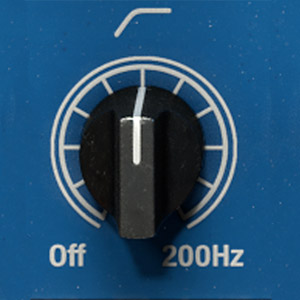
Flexible sidechain equalizer
The sidechain equalization section is simple but efficient. You can let your mix more transparent by preventing low frequencies from triggering compression with the High-Pass filter, adjust the response to vocals or other instruments thanks to the parametric bell filter, and keep the influence of the top-end under control with the positive or negative High-Shelf filter.

Low CPU consumption
We spent a ridiculous amount of time optimizing Mu to consume as few system resources as possible – despite the complex algorithms at work. Pulsar Mu takes full advantage of modern CPUs to do more with less. But if your computer can stand it and you enjoy making it suffer, you can always turn oversampling on, processing at rates up to 384kHz!
| Variant | 1 |










